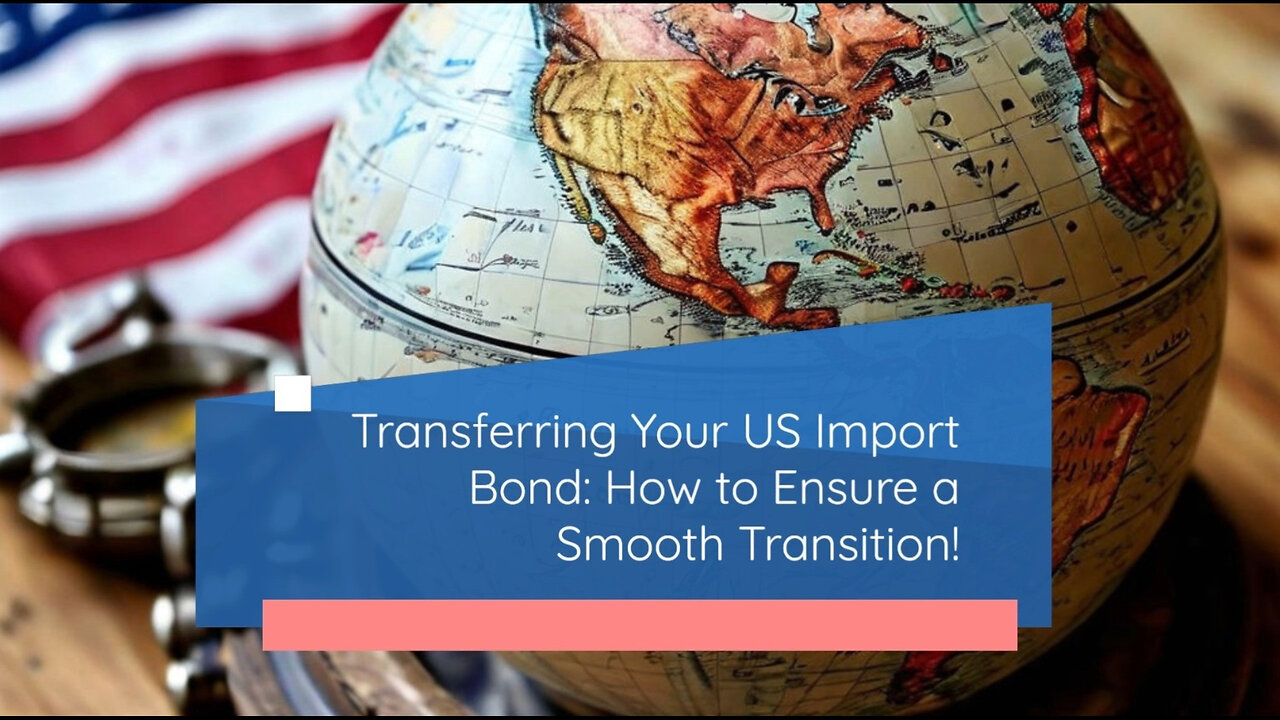Premium Only Content

Transferring Your US Import Bond: How to Ensure a Smooth Transition!
US Import Bond
Phone: 310-928-1180
Email: info@usimportbond.com
https://usimportbond.com
This video explores the topic of whether a US import bond can be transferred or assigned to another party. The concept of a US import bond is explained, highlighting its purpose in ensuring compliance with customs regulations and payment of duties. The conditions for transferring or assigning a US import bond are discussed, emphasizing the need for consent from the current bondholder and eligibility criteria for the new party. The process of transferring or assigning a US import bond is outlined, including the submission of a written request to CBP and the review process conducted by CBP. The significance of the transfer or assignment process is highlighted, emphasizing its role in maintaining compliance and facilitating smooth import operations. The benefits of working with a customs broker in simplifying the transfer or assignment process are also mentioned.
#usimportbond
#isfcustomsbroker
#uscustomsclearing
#isfentry
Video Disclaimer Here: No US government affiliations.
00:20 - A U.S. import bond, also known as a customs bond, ensures compliance with U.S. Customs and Border Protection regulations and payment of duties, taxes, and fees for importing goods into the United States.
00:47 - It is possible to transfer or assign a U.S. import bond to another party, but specific conditions and procedures must be followed. Both the current bondholder and the new party must fulfill requirements set by CBP.
01:22 - The transfer process involves submitting a written request to CBP, providing details of the new bondholder for review and verification of eligibility. This ensures the new party is capable of fulfilling bond obligations.
02:24 - Working with a licensed customs broker can simplify the transfer process by providing expertise in customs regulations and procedures. Consider reaching out to a customs broker for assistance with transferring or assigning a U.S. import bond.
-
 LIVE
LIVE
Dr Disrespect
2 hours ago🔴LIVE - DR DISRESPECT - PUBG - PRO TACTICALLY WINNING
3,293 watching -
 1:58:28
1:58:28
The Charlie Kirk Show
2 hours agoWhy The Left Hates Musk + Punishing Campus Antisemitism | Terrell | 3.12.25
42.6K15 -
 DVR
DVR
Simply Bitcoin
2 hours ago $0.81 earnedPlan To Buy 1M Bitcoin is BACK With A HUGE TWIST!! | EP 1201
14.4K -
 56:47
56:47
The Dan Bongino Show
5 hours agoSpending Bill Passes House And Everyone Loses Their Mind (Ep. 2440) - 03/12/2025
482K1K -
 3:43:02
3:43:02
Right Side Broadcasting Network
5 hours agoLIVE REPLAY: President Trump Holds a Meeting with the Taoiseach of Ireland - 3/12/25
70.1K7 -
 1:03:27
1:03:27
The Rubin Report
3 hours agoThe Exact Moment Bernie Has His Socialist Dream Crushed Into Dust
49.2K40 -
 1:56:59
1:56:59
Steven Crowder
5 hours agoTrump Keeps Winning | Rosie Flees, Ukraine Ceasefire Deal, Canada Backs Down & So Much More
380K245 -
 1:25:07
1:25:07
The Big Mig™
6 hours agoActBlue, the Democratic Fund-Raising Theft & Corruption
25.3K7 -
 52:52
52:52
Grant Stinchfield
2 hours ago $0.77 earnedTwo Illegals Accused of Killing a Man Over a Car Part... After Being Arrested 27 Times!
15.3K5 -
 34:27
34:27
Tudor Dixon
4 hours agoRacing into Politics with Danica Patrick | The Tudor Dixon Podcast
12.9K5